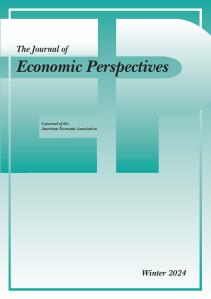Visit the IFS TaxLab site now >>>
Taxes are often the subject of debate; that is as it should be. But those debates need to be well-informed to produce sensible policy outcomes. This will be even more important in coming years as we see debates on whether – and, if so, how – to raise taxes to pay, for example, for additional health and social care for an ageing population, and the transition to net-zero carbon emissions. Any debates should start with a clear understanding of how taxes currently work, who pays them and what the options for reform are.
That is why, today, IFS is introducing Taxlab – a new ‘one-stop shop’ website providing impartial explainers, answers and data on tax. These resources draw on decades of IFS expertise and analysis.
This week has seen much interest in how corporate income is taxed, with the G7 and other countries looking to reform international tax rules to raise additional revenues. Another issue that would also benefit from increased debate – and ideally substantial reform – in coming years is how we tax incomes.
UK income taxes
The UK effectively has two income taxes – income tax and National Insurance contributions (NICs). They are the two biggest taxes and together raise almost half of all tax revenue (close to £350 billion this year). Getting income taxes right should not be a niche pursuit.
NICs are misunderstood and commonly overlooked
There are two common misconceptions about NICs. One is that higher NICs payments earn people rights to higher benefits. In fact, the link between the amount of NICs paid and the amount of benefits received is now vanishingly weak. The other misconception is that NICs revenues are hypothecated to fund the NHS. In reality, there is no meaningful link – NICs revenue doesn’t affect how much is spent on the NHS any more than other revenue sources do.
NICs are a second income tax in all but name. Yet in discussions of taxes on income, it is common to hear discussion of income tax rates – the 20% basic rate or the 45% top rate. But it’s extremely rare to hear mention of the combined income tax and NICs rates. Including income tax and employer and employee NICs, the combined rates (shown in the chart below) rise from 12% (NICs start to be paid before income tax) to 53.4% at the top. One effect of ignoring NICs is that the progressivity of income taxes is easily overstated, because at the higher-rate threshold income tax rates rise but NICs rates fall.
Another effect of ignoring NICs is that it is easy to forget that combined rates vary a lot across different forms of income. NICs are charged at substantially lower rates on income from self-employment than on employment income (see chart). They are not charged at all on income from savings, dividends, pensions or property. And there are no employee or self-employed NICs charged on the earnings of those above the state pension age. The different rates of NICs can lead to unfairness as similar people get very different tax bills. They also encourage more work to happen through self-employment and through people working for their own company (and paying themselves in dividends) than would be the case if purely commercial choices were being made.
Combined marginal rates of income tax and National Insurance contributions outside Scotland, 2021–22

Note: Horizontal axis shows labour cost (gross earnings + employer NICs) for employment and gross profits (earnings) for self-employment; marginal rates are expressed as a percentage of that labour cost / profit. See here for an interactive and downloadable version of the chart.
UK raises less than other countries from NICs, but should think carefully before it raises more
Over the past two decades, the share of UK tax revenue coming from NICs has increased. And yet if we compare the UK with countries that raise more revenue overall, we see that this is almost entirely accounted for by the fact that the UK raises less in NICs than these other countries raise through their equivalent social security contributions, especially on the salaries of middle earners.
But if we chose to raise more from NICs (without changing their structure), we would be increasing taxes on earnings relative to taxes on capital incomes (i.e. incomes from savings, dividends, pensions and property). This would exacerbate the problems associated with having lower rates on capital incomes (some of which we discuss in this recent report).
A rise in employee and/or self-employed NICs would also be focused entirely on the working-age population. This may be hard to justify if the tax increase is to pay for additional health and social care for older people. At a minimum, it should be an active policy choice.
Strong case for a single income tax and reforms to taxation of capital income
There is a strong case for reforming income taxes.
Simplicity and transparency would best be served by a single tax, merging income tax and NICs. This would be a good idea even if it were deemed desirable to keep lower rates on some forms of income – at least decisions over preferential rates would be made explicitly and their implications would be easier for people to see.
There is also a strong case, on the grounds of economic efficiency and equity, for reforming the taxation of capital income. In a nutshell, there is a strong case for aligning overall marginal tax rates across labour and capital income, while reforming the tax base (for example, the treatment of investment spending) to ensure that higher tax rates on capital incomes do not distort the level or form of saving and investment.
The case for reform is strong even if it is decided that the UK should not raise more tax revenue. Better-designed taxes allow us to raise any amount of revenue with less economic harm.
The politics of tax reform are difficult, but worth the fight
Reforming taxes can be difficult. Any meaningful reform, however beneficial overall, would create losers as well as winners. The losers from removing the preferential tax rates on business owners would no doubt be salient in any debate. But keeping the status quo is also a choice – one that unfairly penalises ordinary employees (who pay higher taxes in return for the same services), as well as creating significant economic inefficiency and administrative costs that make us all poorer.
This is a problem with tax reform more generally – politicians and commentators tend to focus on who would lose from a particular change, rather than on the problems and inequities created by the existing system. We always face a choice about exactly how to raise taxes and, ultimately, how to share the burden between us. Politicians mostly choose to stick with the flawed status quo. If more people knew what the status quo entailed, there would likely be more pressure for reform.
More resources from IFS Taxlab
The information in this article was drawn from the following Taxlab pages:
- Income tax explained
- National Insurance contributions explained
- Corporation tax explained
- Should income tax and National Insurance be merged?
- Where does the government get its money?
- How have government revenues changed over time?
- How do UK tax revenues compare internationally?
Today is just the beginning of Taxlab. Much more will be added to the site, including more explainers on how taxes work and who pays them, answers to important questions on the effects of taxes and how we can create better ones, and lots more interactive, downloadable data – so do watch this space. And if you’d like to send feedback, or to suggest questions you would like to see the answers to, you can contact us at @email.
We thank the Friends Provident Foundation and the ESRC (via the IFS Impact Acceleration Account) for the funding that made the establishment of IFS Taxlab possible.










